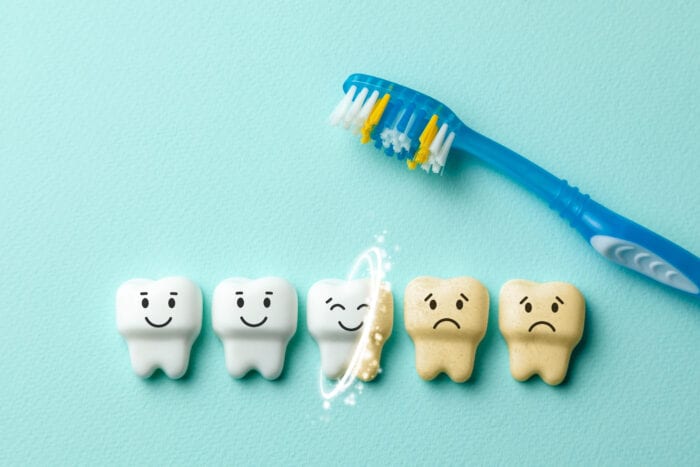 | Blog by: Dr. Casey Rhoads, DDS Dr. Rhoads is board certified and has been part of the Jenkins and LeBlanc team since 2015. She is passionate about her profession and truly enjoys every day she gets to come to work and interact with all the children and staff. life. |
Plaque is whack! What is dental plaque you ask? Dental plaque is a soft, sticky film that builds up on your teeth.
It is a naturally occurring biofilm which contains MILLIONS of bacteria. The good news is, however, plaque can easily be removed by thorough brushing and flossing.
Dental plaque begins to form on your teeth soon after brushing. This is your pediatric dentist at Jenkins & Leblanc always recommend brushing twice a day and flossing daily.
If soft plaque is not removed through regular tooth brushing and flossing it can lead to tooth decay and/or gum disease.
How Does Tooth Decay Happen from Plaque?
Remember those millions of bacteria in plaque? When the bacteria eat those sugars, they produce an acid that starts to dissolve away the strong outer layer of our teeth, the enamel. This forms the first stages of a cavity. Consistent “acid attacks” on the tooth is what will cause the progression of cavities. This is why brushing thoroughly throughout the day is recommended.
If a cavity is not caught early, through regular checkups, the cavity can grow and the bacteria can come into contact with the innermost portion of our tooth: the nerve. Ouch!
What is Gum Disease?
Gum disease, also known as periodontal disease, is when the tissues surrounding the teeth (bone and gingiva) become affected by the plaque that forms on the teeth. The early stage of gum disease is called “gingivitis.” Gingivitis is caused by the plaque that sits on the teeth along the gum line and irritates the tissue.
Our body produces an inflammatory response to the plaque and this is why our gums will appear red and may bleed when we brush and floss. If the plaque is not removed when it is soft it can harden and turn into tartar buildup. This tartar will not come off by brushing alone but will need to be removed at the dentist.
If this tartar is not removed and the gums continue to be inflamed, this process can lead to the loss of surrounding gingiva and bone around the tooth. Left untreated, this can result in the loss of many or all of the teeth in the mouth!
Have More Questions?
If you have any questions about plaque, tooth decay, and gum disease affecting your child’s teeth, get in touch with Jenkins & LeBlanc today. Everything from our reception to our treatment room is designed to make your child feel at home.
